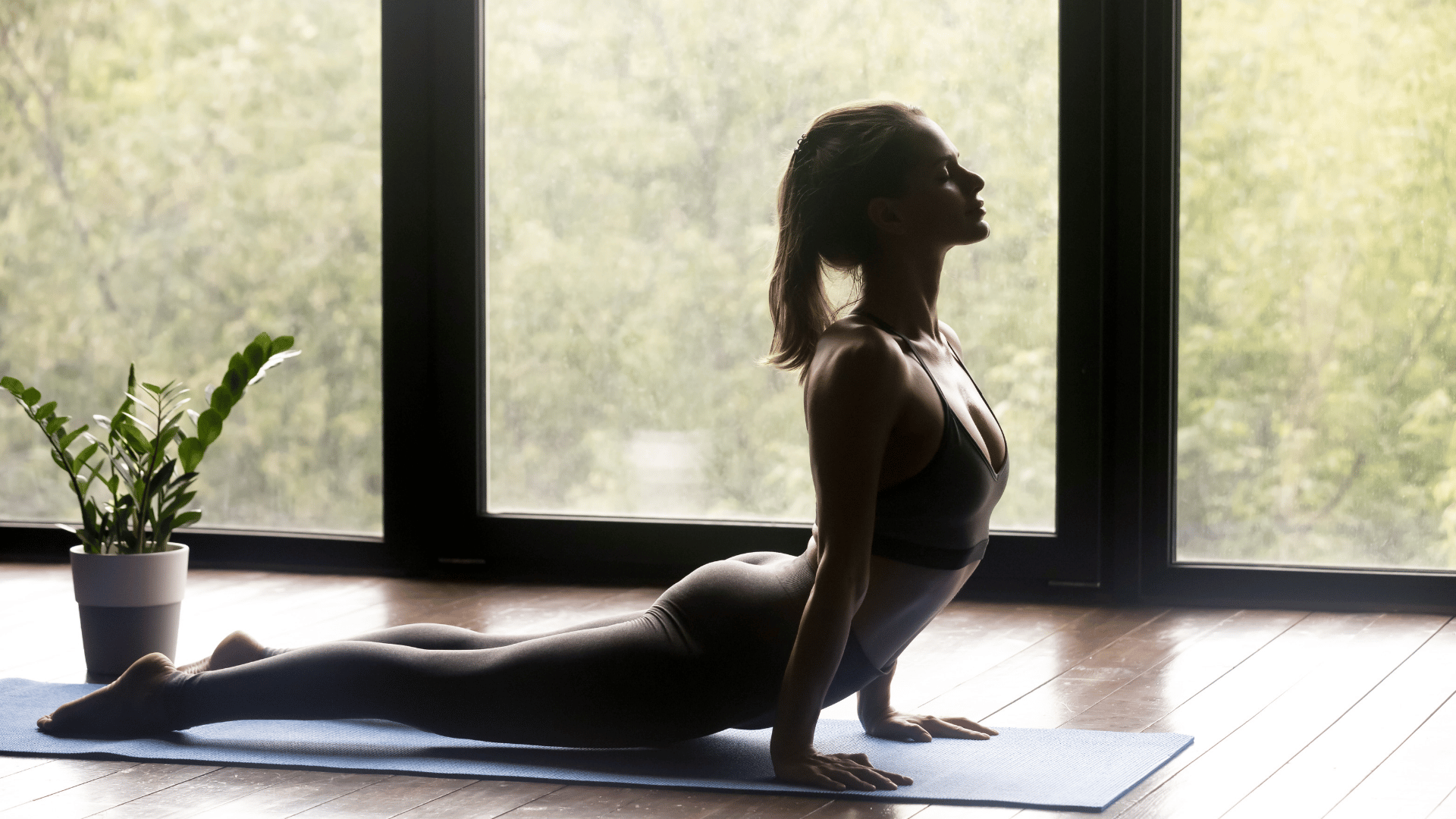The Four routines to create YOUR perfect day
We've identified four critical intervention points in the average person’s day.
These are points where you can intervene and create a disproportionate positive impact on the rest of your day.
And these are also points where if you don't manage them right, your day can go off the rails.
So here’s my top 4 routines for your day (2 in the morning, 2 in the evening) and how to implement them consistently so that they actually stick.

Routine #1
The Wake Up Routine
The first critical intervention point is waking up. Not just the time you wake up, but the state of mind you wake up in.
Imagine what your day would be like if you KNEW, with 100% certainty, that you could wake up “on the right side of the bed” each and every day.
That no matter what happened as the day went on, you had brought your most powerful presence and were prepared to tackle any problem.
That’s the magic of a wake up routine, and it’s completely available for you to have immediately!
The biggest mistakes people make when they wake up are 1) trying to make their morning routine too long and cumbersome, 2) not preparing themselves for success the night before, and 3) thinking it’s all about getting up earlier (it’s not!).
If your mornings are hectic and crazed, remember that preparation the night before is the key to success with a morning routine. If you already have a morning routine, but you’re just not doing it consistently, downsize your routine and focus on being able to run it perfectly for 67 days before adding elements.
The reason for this is how our brains are built. The reptilian part of our brains is responsible for habit formation. That means it relies on treats, or rewards, to determine if something is “good” or not. If it’s good, our brains want to do it again and again. If it’s too hard, it’s marked as “bad” and our brains won’t want to keep doing it. The juice isn’t worth the squeeze, according to our reptilian brain.
Here’s a beginner’s morning routine that our reptilian brains love, and only takes 15 minutes to complete:
Cue: Alarm goes off
- Wash face, brush teeth
- Make bed
- (2 min) List 3 things I’m grateful for
- (5 min) Meditate
- (5 min) Reading
Reward: Nice cup of joe
15 minutes is short enough that your reptilian brain can connect the reward (the coffee) with the routine it just did. The habit loop becomes strong because every time you run the routine, your brain connects it with something “good.”
Notice how simple it is? It’s so simple, you could do it while traveling in a hotel room or before the kids notice you’re awake. Have an early morning meeting to get to? No problem! You still have time for your routine, and you roll into your meeting with your head in the right place.

Routine #2
The START WORK Routine
The second critical intervention point is the moment you sit down to start working.
Based on our data gathered from hundreds of client time trackers, the average person has between one and two hours of time between when they wake up and when they actually sit down to start working.
And they rate that period of time as the MOST STRESSFUL part of their day: they're getting the kids out of the house, eating breakfast, commuting to work, and dealing with distractions as they enter the workplace.
So even if you did a full hour of meditation in the morning, we’ve seen that the chaos and stress of the morning can still seep into your work day.
The Start Work Routine is designed to refocus you on what’s most important to get done, without letting you get sucked into the most common pitfalls of starting your day.
The problems I see most clients encounter with this routine are 1) not having a Start Work routine at all, and hurdling into their day on a prayer 2) getting sucked into their email inboxes too early in the day.
Imagine opening your computer every day and knowing that you had the time to complete your most leveraged priorities, and knowing what would get pushed off to another time.
You’d be able to crush your work day and end it feeling accomplished and satisfied! That’s the power of the Start Work Routine.
Here’s an example Start Work Routine that my more advanced clients absolutely love:
Cue: “I’m opening my computer”
- (2 min) Open your priority setting document and identify #1 priority for the day
- (2 min) Open your calendar and count your available work blocks
- (10 min) Map your critical tasks to your work blocks
- (2 min) Communicate any crucial updates to your team or boss
- (4 min) Process your email inbox to zero
Reward: 10 min checking the news
Beginners may be able to run this routine. But it takes longer if your email inbox is thousands of emails long, or if you don’t have a priority setting system that makes getting clarity on the day a snap. You will need to simplify this routine if you can’t successfully complete it in under 20 minutes.
Important Note: Creating a bullet-proof productivity system where you’re on top of your emails and on top of your priorities is crucial to anyone’s success, not just peak performers, so if you’re struggling in these areas then you should make solving this problem your number one focus. It’s table stakes to becoming the peak performer you know you can be.

Routine #3
The FINISH WORK Routine
The third critical intervention point is towards the end of your workday, roughly an hour before you plan to leave for home. This is the point when that impending sense of panic starts to build inside of you.
Despite your best laid plans, the day hasn't gone exactly the way you wanted it to. You didn't get all of the work done that you needed to get done.
This is where anxiety, fear, and self-judgment start to take root in your day, and they can POISON your mindset for the rest of the evening.
We all need to master the ability to DISENGAGE from our work and let our minds and bodies recover from the day.
When we don’t, we get stuck in a vicious cycle where we “become” our work. Ironically, our work suffers as a result!
Peak performers strike a balance between work, home, and play so that they can achieve heightened excellence.
It’s counter-intuitive, but as the old proverb goes, all work and no play makes Jack a dull boy.
I’m going to show you a Finish Work Routine that will help you to celebrate what you accomplished, mourn what you didn’t, and create a game plan for tomorrow. Psychological studies have shown that this simple ritual allows you to disengage from work, because you know that you have a place to tackle it tomorrow.
The biggest problem my clients encounter with the Finish Work Routine is believing that their day runs them, and that they can’t control when they stop work. “I just work until everything is done” is a common refrain amongst people with this problem. Uh-uh. Not cool. If this is you, we’ve got to put the kibosh on that mindset before it turns you into a robot!
Here’s a sample 20-min Finish Work Routine that’s easy to do, but hard to master:
Cue: Special alarm rings at 5:30
- Start end of day playlist
- (5 min) What did I do, what did I not do, how can I improve tomorrow?
- (5 min) Plan out tomorrow
- (5 min) Last minute urgent emails
- (5 min) Clean desk/office
Reward: Shut laptop and say “I’m done with an awesome day!”
Once this routine becomes second nature to you, you’ll start experiencing a new and exciting feeling - SATISFACTION with your work! Imagine that! Feeling GOOD ENOUGH at the end of the day. Cultivating this mindset and ability is a key hack for creating an upward spiral of success. Not to mention the positive lasting impact on your family, kids, and clients when they experience your healthy relationship towards work.

Routine #4
The BACK TO LIFE Routine
The fourth critical intervention point is when you walk in the door at home.
Much like your morning ritual, we've seen that a few hours elapse between finishing work and coming home. In that time you might be commuting against traffic, working out at the gym, going to dinner, picking up groceries, or any number of evening activities.
I think we've all had the feeling of walking into the door at the end of the day and bringing all of our stress and anxiety with us. And when we do that, we’re fighting that nagging feeling of distraction, disengagement, and anxiety all night long.
I’m going to teach you a ritual based in Japanese culture that will allow you to leave the day behind, and come into the house with a sense of presence.
More than anything, here at Lifehack Method we want you to get your life back. We want your partner or spouse to see a difference in your energy and comment on it.
Imagine being able to completely shift out of “work mode” and be 100% present with your family and loved ones when you walk in the door. Just think of how much better of a parent and partner that could make you! And that’s available to you through the Back To Life Routine.
Here’s a quick Back To Life Routine that gets you from “work mode” to “life mode” though a powerful state change.
Cue: “I’m walking in the door”
- Walk immediately into the bedroom
- Shower or bathe while meditating on the day’s accomplishments
- (2 min) Affirmations about the kind of parent/partner you are
- Change into comfy evening clothes
Reward: Enjoy dinner with your family
The snafu I see often that prevents this routine from working is the belief that your family OWNS your time once you get home. This is the “second shift” mentality that home is like a second job! Another big mindset hurdle that we get to snuff out once and for all. No one owns your time but yourself. You have obligations at home, to be sure, and a lot of them. But if you make 10 minutes for your Back To Life Routine a non-negotiable, it will become one.
OKay, let's put it all together
Remember how I said that without CONSISTENCY, you’ll wind up no better off than before?
The truth is, most people don’t take their routines seriously enough. They don’t make it a priority to be habitualized in the way you need to be to perform at the level you want to perform at! It doesn’t matter if you have the best morning routine in the world if you don’t have the follow through to CONSISTENTLY do it.
That’s why when I coach my clients, I focus on success through consistency rather than having a fancy routine.
Here’s the steps you need to take to ensure consistency in your routines: